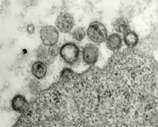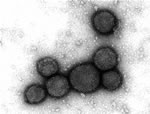Sanitation Control Basic Knowledge
What is an infectious disease?
An infectious disease is triggered by the invasion of pathogenic microbial agents found in the atmosphere, water, soil, animals, and humans. Infectious pathogenic microbial agents include viruses (flu viruses, noroviruses, etc.), rickettsia (scrub typhus), bacteria (enterohemorrhagic E. coli), parasites (pinworm), and fungi (athlete’s foot). Infections can be communicable or non-communicable; the former refers to infectious diseases that can be transmitted between individuals, while the latter do not transmit.
Epidemical infectious diseases (pandemic)
Historically, there have been various episodes of outbreaks of communicable infectious diseases. These include the “Black Death,” which killed nearly 30% of Europeans in the mediaeval age; the new-type flu called the “Spanish Flu,” which took the life of over 50 million people in 1918 etc.

HIV Yoshiwara Namiko
Professor
National Institute of Sanitation Control
There are several other bouts, including AIDS which emerged in 1981 and today, kills about 3 million people a year; SARS which broke out in 2002 and killed 774 people within 9 months; the recently emerged new-type infectious diseases known as the Emerging Infectious Diseases (there are over 30 known).
On the other hand, tuberculosis (TB) is an ancient infectious disease that was discovered in Egyptian mummies. Though it has been controlled with antibiotics, a new type of antibiotic-resistant TB has emerged as a result of repeated exposure of the bacteria to antibiotics. Today, this new-type of TB has reportedly infected over 2 billion people in the world, and about 3 million are (Remark 50) killed every year. Therefore, TB is currently considered a serious infectious disease. Infectious diseases that reappear, recurrent infectious diseases, threaten both poorly developed and industrialized countries.
Severity of the pandemic of the emergent new-type flu
Infectious diseases, like invisible killers, break out into pandemics and destroy countless lives. Due to our limitations in overcoming all the infectious diseases, once a very powerful infectious disease breaks out, it shortly turns into a pandemic.

Type A
Takeshi Sanekata, PhD
The new-type influenza is expected to develop into a pandemic infectious disease. The Spanish Flu was a pandemic that evolved from a weak H1N1 flu virus; although not powerful, it killed 50 million people around the world in 1918.
Following transmission in humans, the new-type flu that evolved from the bird flu virus H5N1 will become a communicable infectious disease among people.
Based on the estimates made by the Lowy Institute for International Policy (Australia) in February 2006, the worst case of H5N1 would result in 142 million casualties and US $4.4 trillion in damages (approx. ¥514 trillion), worldwide.
If valid, 21 million people (1.5% of the population) will be killed in Japan alone.
The forecast estimates that the H5N1 virus will be infectious, and transmit between individuals in the very near future. In today’s modern age where air travel is so common, the avian flu may suddenly develop into a pandemic.
We may expect rescue or mitigation from other countries for regional disasters like typhoons and earthquakes. However with a pandemic, foreign rescue or mitigation may result in a catastrophe all over the globe.




